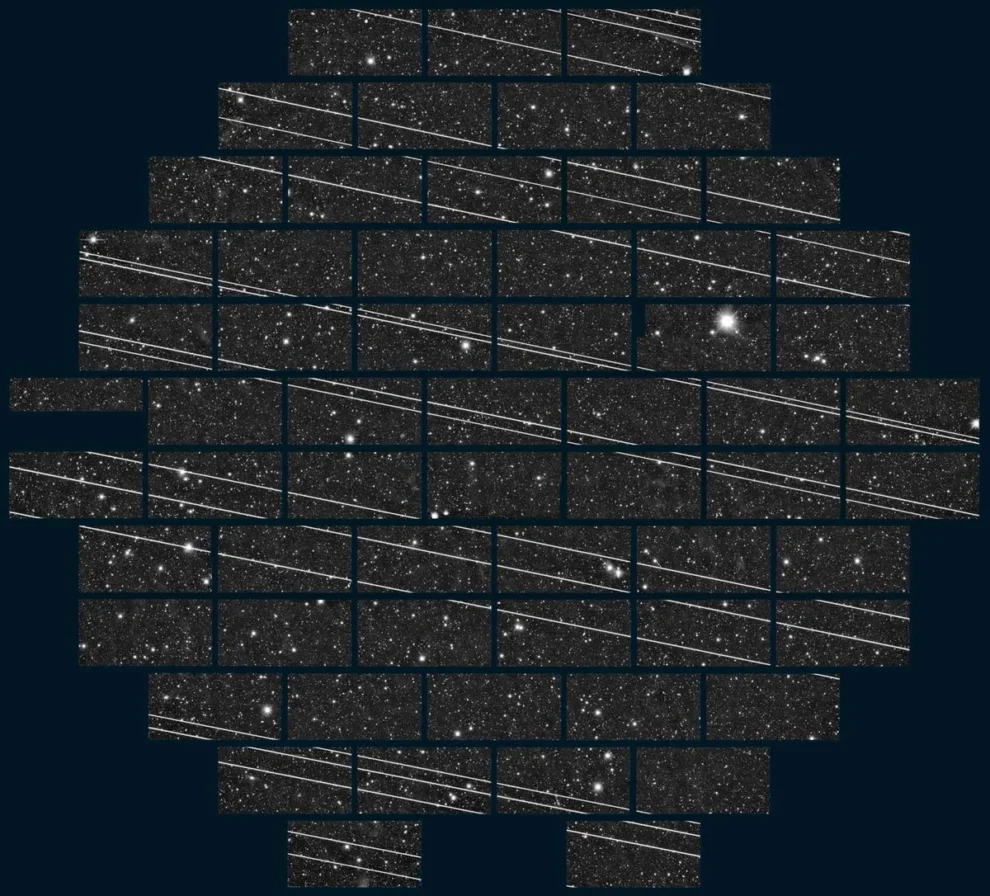In the grand tapestry of space exploration, Elon Musk’s Starlink project stands as a testament to human ambition, promising to blanket the globe with high-speed internet connectivity through a vast network of satellites. However, this ambitious endeavor has sparked intense debate within the astronomical community, raising concerns about the potential “existential threat” Starlink poses to our ability to observe and understand the universe.
- Elon Musk and SpaceX: The driving force behind Starlink, aiming to bridge the digital divide with satellite internet.
- Astronomers and Astrophysicists: Scientists relying on clear night skies for research and discovery.
- International Astronomical Union (IAU): A global organization voicing concerns about the impact of satellite constellations on astronomy.
- Regulatory Bodies: Entities like the Federal Communications Commission (FCC) in the U.S., grappling with balancing technological innovation and environmental concerns.
The crux of the matter lies in the sheer number of Starlink satellites and their reflectivity. With thousands already in orbit and plans for tens of thousands more, these satellites create streaks of light in astronomical images, interfering with observations of faint celestial objects. This has serious implications for various fields of astronomy, including the search for exoplanets, the study of distant galaxies, and the detection of potentially hazardous near-Earth asteroids.
The concerns began shortly after the first batch of Starlink satellites was launched in 2019. Astronomers quickly noticed the bright streaks in their images, and the issue has intensified with each subsequent launch.
The impact of Starlink is global. While the satellites are most visible shortly after launch and near twilight, their effects are felt by observatories worldwide.
Astronomy is more than just stargazing; it is a fundamental science that expands our understanding of the universe and our place within it. The potential loss of astronomical data due to Starlink’s interference could hinder scientific progress and rob us of discoveries that could shape our future.
The Astronomical Community’s Concerns
- Light Pollution: The bright trails left by Starlink satellites create light pollution that obscures faint objects in the night sky, making it challenging to study distant galaxies, nebulae, and other celestial phenomena.
- Radio Interference: While SpaceX has taken steps to mitigate radio interference from Starlink, concerns remain about its impact on radio astronomy, which relies on detecting faint radio signals from the cosmos.
- Loss of Scientific Data: The interference from Starlink could lead to the loss of valuable astronomical data, potentially setting back research and delaying discoveries.
SpaceX’s Response and Mitigation Efforts
SpaceX has acknowledged the concerns of the astronomical community and has taken steps to address them.
- VisorSat: SpaceX has implemented a sunshade called “VisorSat” on newer Starlink satellites to reduce their reflectivity.
- DarkSat: An experimental coating was tested to further reduce the satellites’ brightness.
- Collaboration: SpaceX has engaged in discussions with astronomers and the IAU to explore potential solutions and mitigate the impact of Starlink on astronomy.
The Broader Implications
The Starlink controversy highlights the growing challenge of balancing technological advancement with environmental concerns. As humanity ventures further into space, it is crucial to consider the impact of our activities on the delicate balance of the cosmos.
- The Need for Regulation: The rapid deployment of satellite constellations like Starlink underscores the need for clear international regulations governing the use of space and the protection of the night sky.
- The Future of Astronomy: The astronomical community is actively exploring new technologies and strategies to adapt to the challenges posed by satellite constellations, ensuring that our quest to understand the universe continues.
The future of Starlink and its impact on astronomy remains uncertain. While SpaceX’s mitigation efforts show promise, the sheer scale of the project raises ongoing concerns. It is crucial for all stakeholders – SpaceX, astronomers, regulatory bodies, and the public – to engage in open dialogue and collaboration to find a sustainable path forward that allows for both technological progress and the preservation of our celestial heritage.
The Starlink saga serves as a stark reminder that our actions in space have far-reaching consequences. As we continue to explore the cosmos, it is imperative that we do so responsibly, with an unwavering commitment to preserving the night sky as a shared resource for all of humanity.








